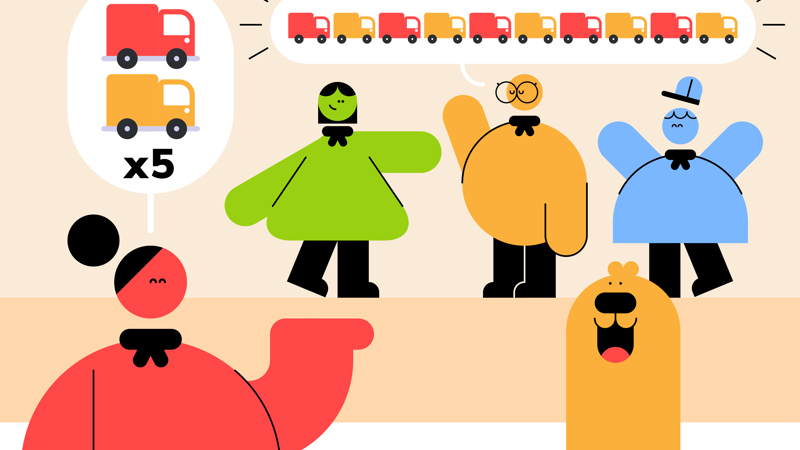
Friend finding mission
- Everyone should spread out across the meeting place.
- Everyone should start to mingle around – people could walk, skip, hop, or run.
- The person leading the game should call out ‘Find a friend who…’. They should end their sentence with something that people can see, for example, ‘Find a friend who has their hair tied up’ or ‘Find a friend who’s wearing shorts’.
- Everyone who matches the sentence ending should let everyone else know, so people who don’t match the sentence ending can get into groups with them. The groups can be all different sizes, but nobody should be left on their own. For example, if four people are wearing shorts, everyone should end up in four groups (maybe a pair, two groups of three, and a group of five).
- Once everyone’s in their groups, the person leading the game could check if people are in the right place.
- Everyone should split back out of their groups and mingle around the meeting place again.
- The person leading the game should call out ‘Find a friend who…’, with a different sentence ending. Everyone should repeat steps four to six.
- Once everyone’s confident with the rules, the person leading the game should start using sentence endings that are about things that people can’t see. To form these groups, people will have to chat with each other.
- Everyone should keep playing until they know each other better.
Suggestions for your friend finding mission
Find a friend who...
- has a pet
- likes Brussel Sprouts
- has a sibling
- can play a musical instrument
- has a family member whose name begins with the letter ‘m’
- was born in July
- has been camping
- can rub their tummy and pat their head at the same time
- hates baked beans
- has flown in an aeroplane
- can do a forward roll
- can say ‘Hello, how are you?’ in a language other than English
- can say ‘Red lorry, yellow lorry’ really quickly five times
Reflection
This game helped everyone to learn more about each other – this is an important part of building friendships. Can anyone think of anything that makes friendships stronger and more meaningful? People may think about spending time together, sharing hobbies or interests, or taking on a challenge together. Sometimes people make friends because they like the same things, but other friendships are built on differences. Did anyone find someone who had similar interests, hobbies, or skills? Did anyone notice someone who had some totally different experiences they’d like to learn more about?
This game was also a chance for everyone to share things about themselves with the group. It can make people feel good to share and be proud of the things that make them unique. The way we live and the things we enjoy doing make us who we are. It’s great to celebrate these things, and any we have in common or different with others. Does anyone have an interesting hobby, skill, or fact about themselves they’d like to share with everyone else?
Safety
All activities must be safely managed. You must complete a thorough risk assessment and take appropriate steps to reduce risk. Use the safety checklist to help you plan and risk assess your activity. Always get approval for the activity, and have suitable supervision and an InTouch process.
- Active games
The game area should be free of hazards. Explain the rules of the game clearly and have a clear way to communicate that the game must stop when needed. Take a look at our guidance on running active games safely.
- To make it trickier, ask people to arrange themselves without making any noise. They’ll have to use hand gestures, mime, or facial expressions to figure out who fits the sentence ending.
- Add in skills people are working on, for example, asking people to find someone who can tie a reef knot, spell their name with the phonetic alphabet, or put up a tent.
- You could ask people to share a fact about themselves to use in the game. It should be something they’re happy for everyone to know.
- To make it trickier, ask people to arrange themselves without making any noise. They’ll have to use hand gestures, mime, or facial expressions to figure out who fits the sentence ending.
- Add in skills people are working on, for example, asking people to find someone who can tie a reef knot, spell their name with the phonetic alphabet, or put up a tent.
- You could ask people to share a fact about themselves to use in the game. It should be something they’re happy for everyone to know.
Make sure that everyone fits at least one of the sentence endings you use. People can move around in whatever way works for them. Be aware of any sensitive topics you may need to avoid, for example, not asking about siblings if anyone is likely to find that upsetting.
All Scout activities should be inclusive and accessible.
Now everyone’s learned about each other (and thought about themselves too), it could be the perfect time to introduce the Hobbies Activity Badge. Next time you meet, people could bring their hobby along.
People could work in pairs to lead this activity – they could make up some of their own sentence endings.
